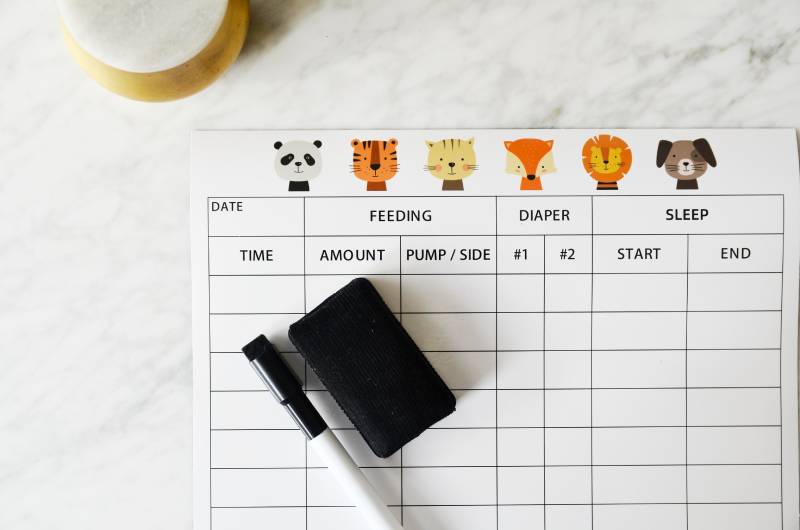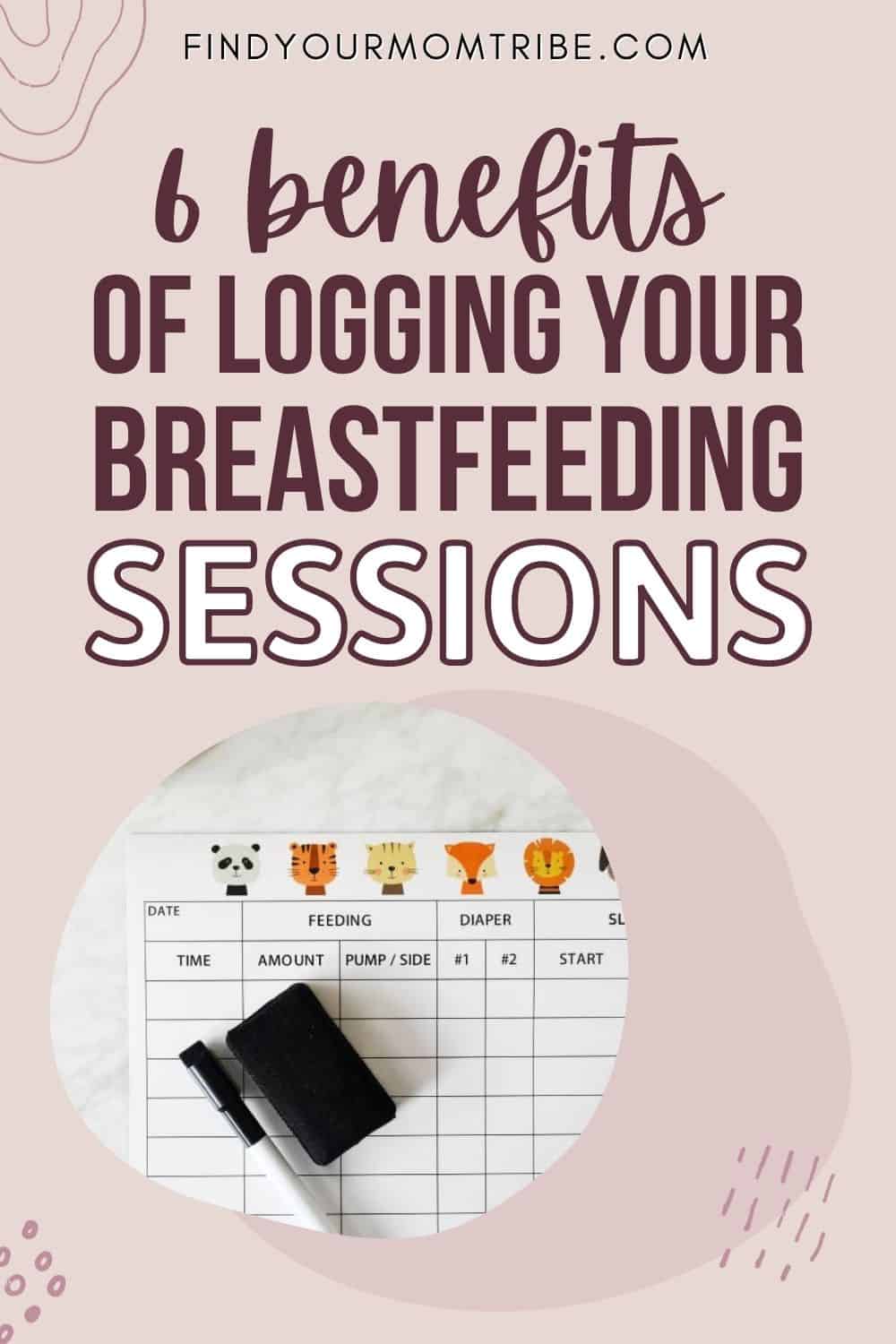This is a guest post by Michelle Mak.
Michelle Mak is a baby product developer and blogger. Michelle is the creator of the original Mewl Baby Whiteboard. She has a toddler son and lives in San Francisco.
Breastfeeding is very natural but that doesn’t mean it’s easy. For many moms, breastfeeding is a whole new territory and it can be intimidating.
One of the ways to help make things easier is to log your breastfeeding sessions.
It is especially handy during the early months of motherhood when you’re sleep-deprived and can’t recall details like which breast to switch off to.
There are many options to log breastfeeding sessions such as apps, a baby whiteboard, or pen and paper.
Whichever method works for you, logging each session will help you stay organized. The important information you want to track are:
• How often you are breastfeeding per day
• How long are your breastfeeding sessions
• Which breast did you start with so you can alternate at the next session
The American Academy of Pediatrics recommends exclusive breastfeeding for at least 6 months. Breastfeeding babies will nurse 8 to 12 times a day according to the CDC.
That’s a big commitment and a lot of breastfeeding sessions!
You and your baby are learning to breastfeed together. Logging these sessions can be helpful.
Benefits of Logging Breastfeeding Sessions
1. Understand your baby’s feeding patterns

Every baby is different and has different needs. Some babies may take longer to feed than others. Some may want to nurse more often at certain times of the day.
Feeding your baby should not follow a strict, rigid schedule. Instead, notice and follow your baby’s hunger cues:
• Making sucking noises
• Baby starts opening his mouth
• Begins sucking on his fingers, hands, toes, or anything he can grab
Once you start feeding on demand and logging these times, you will begin to see your baby’s natural feeding patterns and will have a more predictable routine.
You will know when your baby will be hungry ahead of time, so you can nurse before he starts crying (a very late hunger cue).
You will notice that these patterns will change over time as your baby grows.
2. Ensure your baby is eating enough

The tricky thing about breastfeeding is that you don’t know exactly how much your baby is drinking vs bottle-fed babies.
The good news is your baby will let you know when they are full with some of the following cues:
• Turns away from the breast
• Relaxes hands from fists
• Looks satisfied
• Slowing down on sucking
• Dozing off on the breast
By logging the start and end time of each breastfeeding session, you can spot quickly if your baby has very short or extra long feedings.
Newborns will need practice for a few days to get the hang of nursing. However, after a week or so, if your baby is actively nursing for more than 45 minutes, it could mean they are not getting enough breastmilk during feedings.
A very short nursing session is considered less than 5 minutes. It is not long enough for the hindmilk to flow.
Hindmilk contains more fat and calories than foremilk and it helps your baby sleep longer and gain weight. Very short or very long feeding times can be causes for concern and you should call your doctor or pediatrician.
3. Working with a lactation consultant

The Affordable Care Act was passed in March 2010, requiring that insurance plans cover breastfeeding support and equipment for breastfeeding mothers.
This includes the cost of your breast pump and services with a certified lactation consultant.
If it’s your first time breastfeeding, working with a lactation consultant could provide additional guidance and support. They can help answer any questions you may have or reduce anxiety around breastfeeding.
They can also help with:
• Suggesting breastfeeding positions that work for you and your baby
• Ensuring your baby has a deep latch
• Addressing milk production challenges
• Pain with breastfeeding
• Discussing baby weight goals
Logging breastfeeding sessions also helps lactation consultants get better insight on how your baby is nursing.
Once she is able to understand your routine and schedule, she has a better idea and will be able to provide suggestions to make breastfeeding more efficient and enjoyable for the both of you.
4. Handy during pediatrician visits

At your first few pediatrician visits, the doctor will ask questions to ensure your baby is growing normally.
• How many times do you breastfeed per day?
• How many wet AND dirty diapers do they go through a day?
• What does their sleep schedule look like?
If you are sleep-deprived or having a case of “Mommy brains”, it will be hard to remember these details.
Keeping a log of at least the last couple of weeks or until the next doctor visit will come in handy. A log to reference during these visits will also help you ask better questions too!
5. Spot growth spurts

When they say babies go through lots of changes, they were not kidding! Growth spurts happen almost weekly the first couple of months and throughout the first year:
• 1 to 3 weeks
• 4 to 6 weeks old
• 3 months
• 4 months
• 6 months
• 9 months
Again, every baby is unique and will go through them at different times.
One of the biggest signs of a growth spurt is they are HUNGRY. Your baby will want to nurse longer or more frequently.
Some babies may want to cluster feed by demanding frequent feeds within a short period of time.
If you find yourself logging more breastfeeding sessions than usual, it’s a good indication that your baby is going through a growth spurt.
6. Relieves stress

For some moms, tracking and logging breastfeeding information gives them peace of mind.
Many moms take comfort in tracking their baby’s growth, and knowing that they can rely on a routine. They know what to expect!
It’s a helpful guide of what happened, what to do next, and around what time.
They don’t have to worry about remembering all of that information and if there are any concerns, they can refer back to the log.
References:
• Centers for Disease Control and Prevention. (2020, December 11.) “How Much and How Often to Breastfeed”. CDC website.
• Centers for Disease Control and Prevention. (2021, July 9.) “Breastfeeding Recommendations and Benefits”. CDC website.
• Health Resources & Services Administration. (2020, October.) “Women’s Preventive Services Guidelines”. HRSA website.
Like this post? Please share or pin it for later. You can also stay in the loop and follow us on Facebook, Instagram or Pinterest.

We love honesty! Find Your Mom Tribe is an Amazon Associate and we earn from qualifying purchases through affiliate links at no extra cost to you. Please see our full Amazon Affiliate disclosure for more information.

